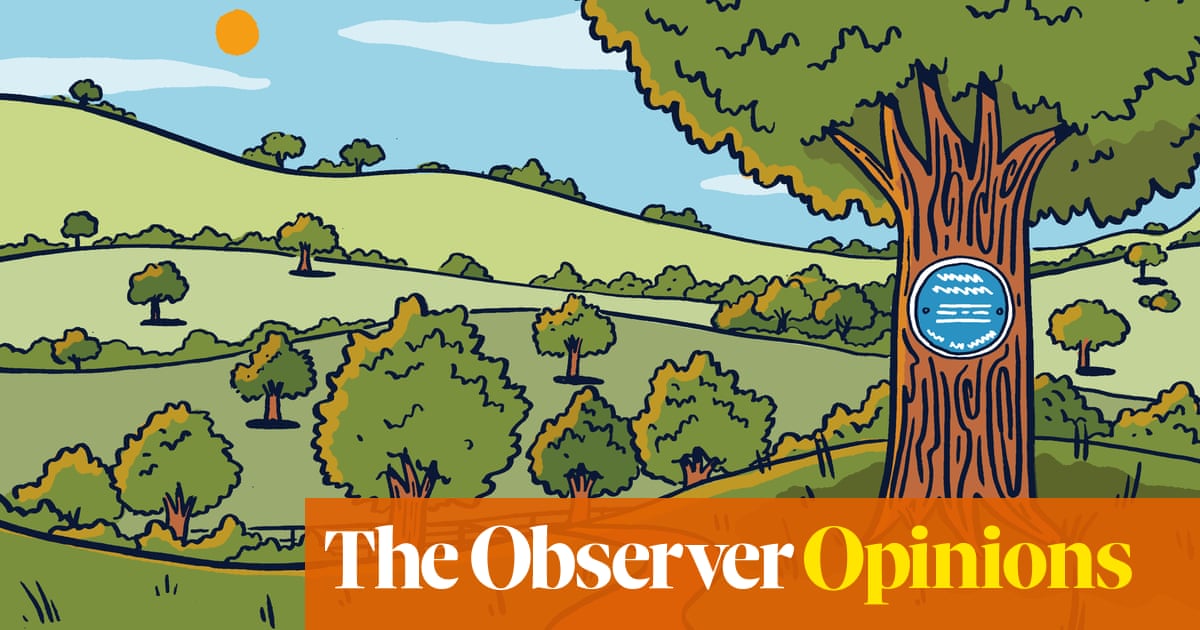I was struck last week by a story about Alton, a town in Hampshire, where residents have hit on a new basis for object to development in the area: Jane Austen sometimes used to walk there from nearby Chawton. The surrounding landscape, a petition reads, is therefore an important part of our literary heritage and must not be built on.
On the one hand, this is a story about nimbyism and the lengths to which people will go to try to prevent the nightmare of local housebuilding: months of extra noise, increased traffic, a destroyed view and the headache-inducing realisation that complaining about any of this will probably put you in the wrong. After all, as some smug person living outside the development zone will rightly remind you, Britain badly needs more houses and we have to build them somewhere.
In this context, Altonâs request does seem like a bit of a stretch. Does the fact that Austenâs âbrother, Henry, was a partner in a bank in the high streetâ, as the petition states, or that it was the âhome of her surgeon apothecaryâ, really merit formal protection from Historic England? If so, as the Times noted, we could by the same token block new housing in most of Sussex, owing to Pride and Prejudice; Gloucestershire, thanks to Laurie Lee; or pretty much the whole of Wales, provided pretty good cover by the works of Dylan Thomas.
But there is another story here, too. What we have at present is a rather stark hierarchy of heritage. Buildings and artefacts are granted high levels of safeguarding. Yet culturally important landscapes, trees and rivers are left relatively undefended. Why the lack of equivalence?
Among those raising the question is the Woodland Trust, which recently launched a campaign for old and noteworthy trees to be granted similar heritage protection as old buildings. Among the trees it has in mind is the Kilbroney Oak, 300 years old and within a landscape believed to have inspired CS Lewisâs Chronicles of Narnia. Another is the Major Oak â bound up in the legend of Robin Hood and thought to be between 800 and 1,000 years old. Yet trees can be guarded only by fairly weak tree preservation orders, which can be overridden by planning permission, acts of parliament, the Forestry Commission and a variety of applications to remove them.
Campaigners are increasingly calling on literary heritage to defend areas â last month, villagers protested against a development on land near Blackmore Vale, Dorset, where Thomas Hardy set Tess of the dâUrbervilles. Another voice asking for more parity is the barrister Paul Powlesland, who has called for natural phenomena to be given listed status, as buildings are, or the equivalent of our rules preserving ancient monuments. âImagine two oak saplings taking root in 1502,â he has written. âOne is chopped down to build a house and one keeps growing. The oak in the building is, by its age, eligible for listed building protection. The 500-year-old living oak is not eligible and will often have no protection.â In fact, the only listed tree in Britain is a dead one â the stump of the Elfin Oak in Londonâs Kensington Gardens, which was carved and decorated by a childrenâs book illustrator in the late 1920s.
Altonâs campaign may look like a reach â but compare it with the attention given to even the most obscure Austen artefacts. Humdrum letters to friends, scraps of paper with her autograph, and portraits merely ârumouredâ to be of the author are protected by layers of security and moneyed trusts, and may sell for hundreds of thousands. Archaeologists have meanwhile raked through the foundations of Austenâs childhood home, studying fragments of plates and glasses excavated there to âsee what her daily life was likeâ. We fetishise anything touched by famous literary hands; why do we not work harder to preserve the landmarks they wrote about?
After all, British identity is deeply bound up in its rural landscapes, a fact underrated by politicians, who, when casting about for patriotic values to champion, often leave out this most obvious, visceral and ancient of attachments. In his book Storied Ground, Paul Readman writes that the âpatriotic force of landscapeâ and its importance to ideas of ancestral legacy has long been neglected by historians, too. Notions about the âessential Englandâ have long been linked to its countryside; phrases such as âThackeray-Landâ, âWordsworthshireâ and âBrontë Countryâ all emerged before the end of the 19th century.
The idea of conserving nature on the basis of cultural associations is not without flaws. Landscapes should not necessarily be frozen at the point that a famous person wrote about them. When the UN agency Unesco granted the Lake District world heritage status â the fells are imprinted with the legacy of Wordsworth, Coleridge, Ruskin and Beatrix Potter â it voted to preserve a section of countryside that had already suffered severe deforestation and had then been grazed to death. Unesco now guards a âcultural landscapeâ that could arguably do with more trees and fewer sheep.
after newsletter promotion
Even so, Britainâs countryside needs all the help it can get: the UK was recently deemed one of Earthâs most nature-depleted countries. We are good at safeguarding things humans make: Historic England currently protects 500,000 buildings so stringently that it often causes problems for the guardians of the structures, who are forced to maintain leaky, inconvenient or malfunctioning period features. Can we not lend some of this enthusiasm to conserving our natural heritage too?
Martha Gill is an Observer columnist
-
Do you have an opinion on the issues raised in this article? If you would like to submit a letter of up to 250 words to be considered for publication, email it to us at observer.letters@observer.co.uk

